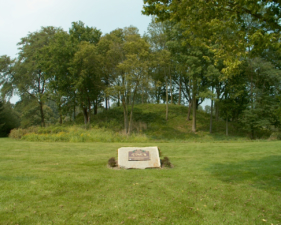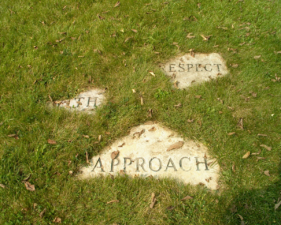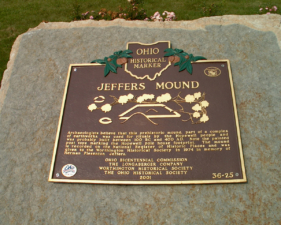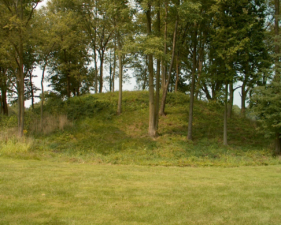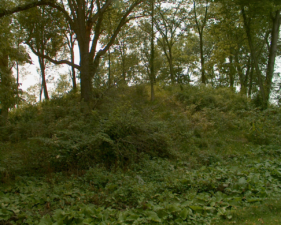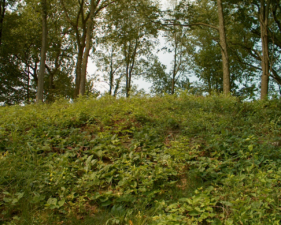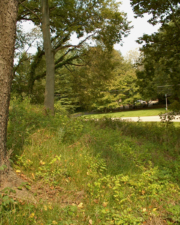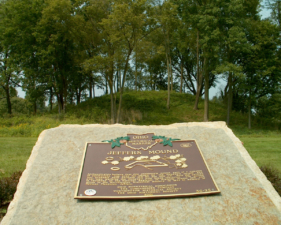The OES visited Jeffers Mound on September 5, 2004. Jeffers Mound is all that remains of a much larger earthwork that once occupied the location that overlooks the Olentangy River. Researchers believe the mound was constructed by the Hopewell culture sometime between 100 BC and 400 AD. Evidence collected in the 1830s showed the original earthworks consisted of a rectangular embankment about three feet high, two circular enclosures, a small mound at the center, and the 20-foot high Jeffers Mound. The area was surveyed in 1847 and published in the book Ancient Monuments of the Mississippi Valley. Some of the embankment walls and smaller mounds were still visible as late as 1930, but the repeated plowing of the land for the century prior had worn down all but Jeffers Mound. Ash, pottery fragments, layers of wood, and two skeletons were discovered in the mound during an 1866 excavation.
In the 1920s, Herman P. Jeffers purchased the land, including the mound. A subdivision was platted for Jeffers’ land in 1954, luckily the mound was spared. Jeffers Mound was deeded to the Worthington Historical Society in 1974 to ensure it would be preserved for years to come and was also placed on the National Register of Historic Places that same year. Archaeologists conducted excavations at Jeffers Mound in the late 1970s, finding the remains of a structure that once stood southeast of the mound. A dig in 1985 found projectiles and other artifacts that suggested the Hopewell had used the area as a long-term settlement. Jeffers Mound is preserved today as a public park for anyone to visit and enjoy.
Location Information: Public Park
Jeffers Mound is located on Plesenton Drive in Worthington; Franklin County.


